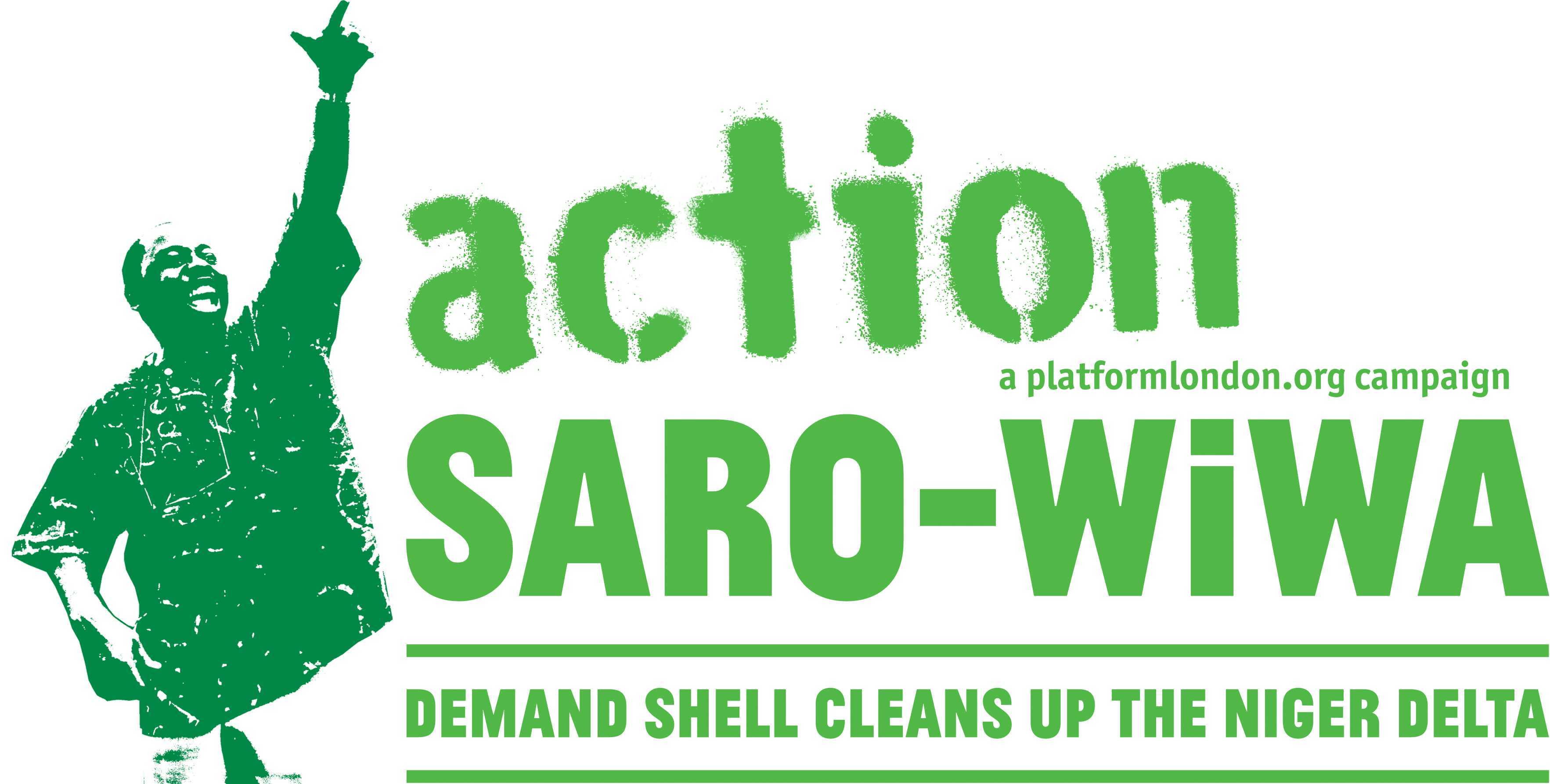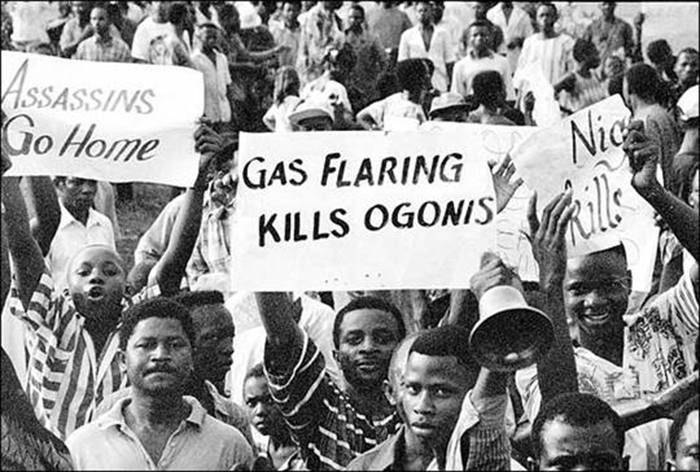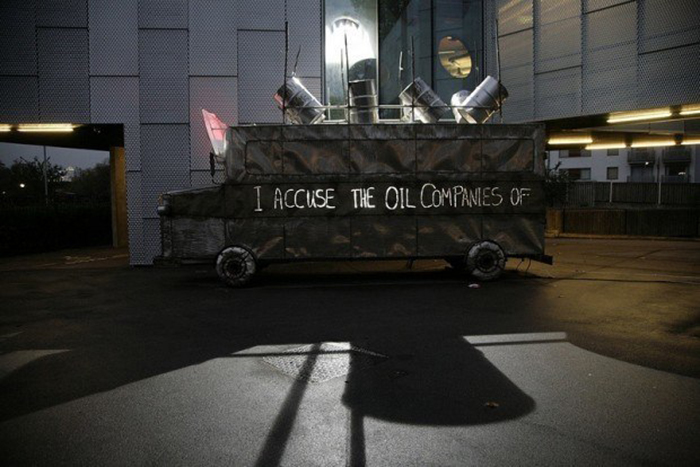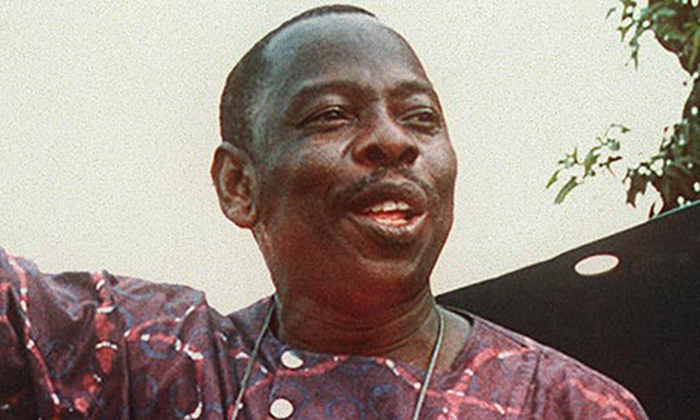Critical Art on the Move
Three days ago the Nigerian government impounded a bus, denying its entry to Nigeria. Not its occupants were the reason but its political value: The Bus is a ‘Living Memorial’ to Nigerian human rights activist and environmentalist Ken Saro-Wiwa, who was executed with eight other activist by the Nigerian military government 20 years ago.
It’s a huge moving sculpture on wheels – not technically spoken, as the bus is not motorised. Nigerian-born artist Sokari Douglas Camp made it in 2006, after Camp was elected through competition to make a memorial piece to honour Ken Saro-Wiwa. It’s a blackened steel bus, carrying eight tons on its roof. Carved into the bus’s main body, Saro-Wiwa’s words can be read, saying ”I accuse the oil companies of practising genocide against the Ogoni”. The bus was first exhibited in London and afterwards travelled across UK; exhibiting areas had been chosen partly because of their historical links with the slave trade. Now it has been sent to Nigeria on occasion of the 20th anniversary since the hanging of Saro-Wiwa. But upon arrival at the Lagos port on September 8, custom officials impounded it. The initial plan of making several stops in Nigeria until it reaches its final destination in Ogoniland has been smashed – for the moment at least. It is no wonder that the approach of blocking the sculpture’s entry to Nigeria triggered critical voices an led to protests on Tuesday.
To understand the government’s reaction and the art piece itself, it is necessary to look at its political value and therefore on its importance as being a symbol of transporting environmental debate, solidary with Nigerian’s activists and the critics against the country’s government and its domestic operating powers. It is an open secret that ecological deconstruction and exploitation of natural resources are main problems of nowadays’ world, eventuating in other disastrous issues like the extermination of animal species or the loss of habits. Further on, developing countries as Nigeria are the ones who operate less against those issues and suffer the most at the same time – latter due to problem shifting as well as facing much more domestically and social difficulties than industry countries. Moreover domestic environmental activist are rare and the very few instances have to face political repression, persecution and capital punishment – as in case of Ken Saro-Wiwa.
The Niger Delta, based in the south of Nigeria, is an oil-rich region and therefore faces widespread environmental damages caused mainly by oil-production. For many years agricultural land as well as fishing waters and natural habits are polluted and the main company to blame is Shell. The oil giant operates in this region for more than 50 years and earned hundred billions just from the regions’ outcome – to the disadvantages of the region’s nature and denizens. Also Blacksmith Institute’s yearly report names the region as one of The Worlds Worst 2013 and the main ones who suffered – and still do – are the Ogoni people, who live in the so-called Ogoniland within the Niger Delta. 20 years ago, Sawro-Wiwa was one of the activists who led the protests against environmental damage. He was also the one, who provided the basis for the Movement for the Survival of the Ogoni People (MOSOP) by his Ogoni Bill of Rights. In 1995, Ken Saro-Wiwa and eight other activists were sentenced to death because of their alleged involvement in the murder of four Ogoni tribal leaders. The verdict was not only criticised by human rights organisations but also led to the exclusion of Nigeria from the Commonwealth of Nations. Even nowadays MOSOP’s one aim among others is to achieve self-determination in environmental issues.

Against this backdrop, the bus is a honouring memorial to Ken Saro-Wiwa as well as a symbol of showing solidarity with the continuing efforts to get the oil giants to repair damage caused by spills in Ogoniland. An opinion that is apparently not shared by the government of nowadays – as the latest impoundment of the art piece shows.
[widgetkit id=20005]



